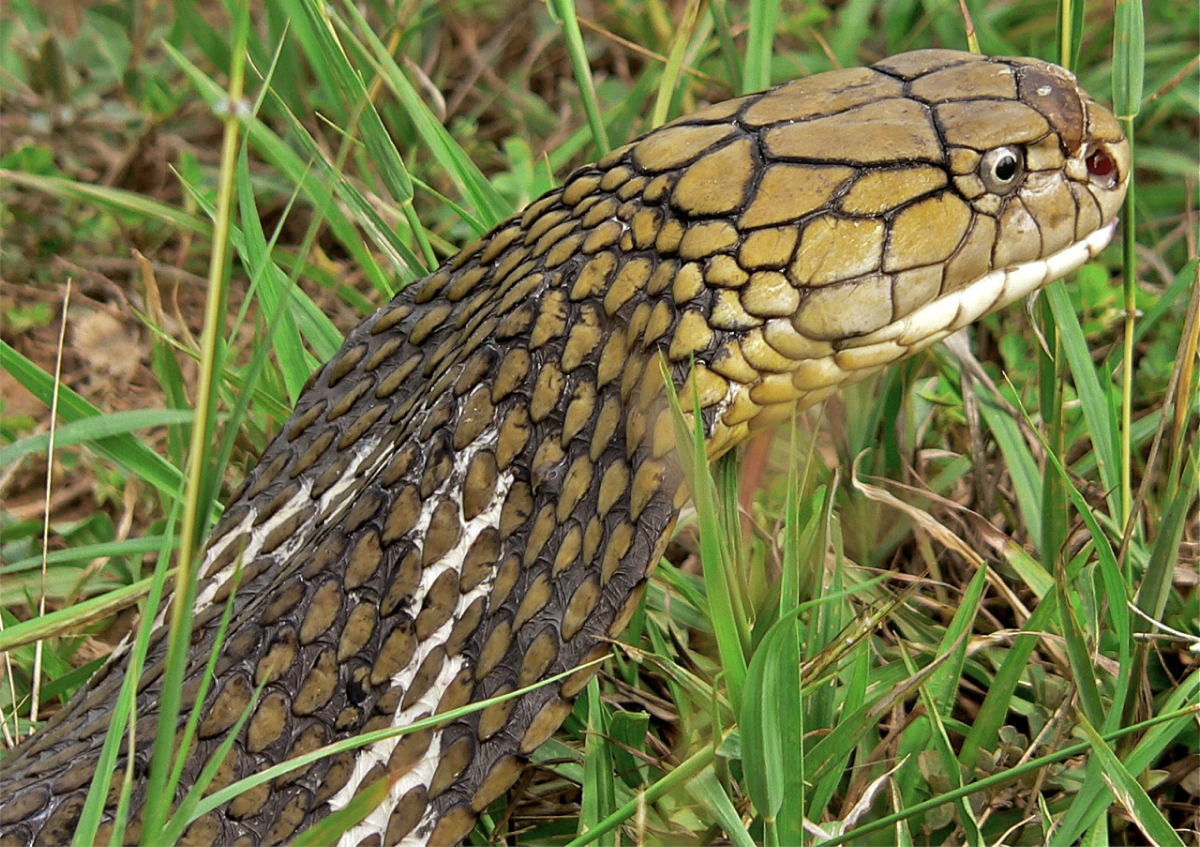One fifth of the world’s reptile species are threatened with extinction
King Cobra (Ophiophagus hannah) from Central Thailand. © Mark Auliya
For the first time, a study provides comprehensive assessment on the acute threat to turtles, crocodiles, lizards, snakes and tuataras. Data from researchers in 24 countries across six continents was collected as part of the global Red List of the International Union for Conservation of Nature (IUCN) and published in the scientific journal “Nature”. According to the publication, to which the LIB contributed, at least 21 percent of all reptile species worldwide are critically endangered.
Every fifth reptile species is threatened with extinction: More than 900 scientists, led by NatureServe, IUCN and Conservation International, were involved in the global assessment of the conservation status of a total of 10,196 reptile species. They analysed the conservation needs of reptiles compared to mammals, birds and amphibians, for which comprehensive data is already available.
“These study results show that reptile conservation research no longer needs to be overshadowed by that of amphibians, birds and mammals. It is concerning though that more than a fifth of all known reptile species are threatened,” explains Dr. Mark Auliya, who worked on the study as a reptile expert for the Leibniz Institute for the Analysis of Biodiversity Change (LIB), Museum Koenig Bonn.
Like birds, mammals and amphibians, reptiles are threatened by agriculture, deforestation, urbanisation, trade and invasive species. Species that live in forests are more endangered by these factors than reptiles in arid habitats. However, the research also shows that threatened reptile species can benefit from conservation measures for other terrestrial vertebrates.
“Findings from this work must now be channeled into concrete research activities to classify the degree of endangerment of certain species and thereof derive targeted conservation measures. However, for the sustainable conservation of reptile diversity and their ancestral ecosystems, an interdisciplinary approach involving responsible actors is an indispensable prerequisite to halt the increase in threatened species,” Mark Auliya demands.
The results serve as a basis for measuring changes in extinction risk and tracking progress in species recovery over time.



